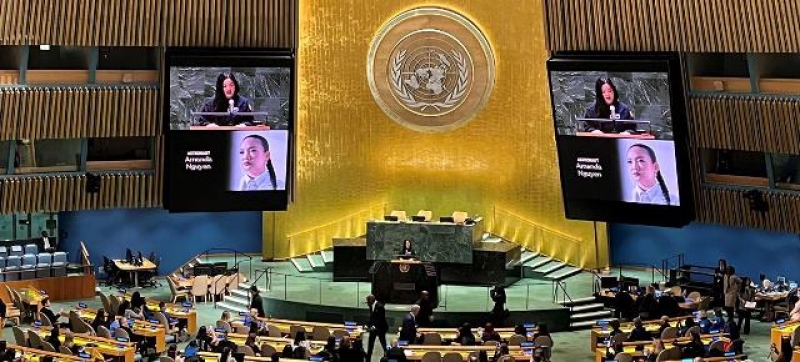- At AI Summit, diplomats mull destiny of tech revolution |
- Reaching for stars: We know answers to support women in STEM |
- Trump talks Gaza takeover plan to Jordan's King Abdullah |
- Dhaka’s air world's 6th worst Wednesday morning |
- Tetulia’s Tulip boosting tourism, regional economy |
Reaching for stars: We know answers to support women in STEM

11 February 2025 - Science, Technology, Engineering and Mathematics (STEM) are crucial to economic growth – yet gender inequality in these fields remains widespread.
“Despite the progress, women still make up only one-third of the global scientific community and face significant barriers in funding, publishing and leadership roles in STEM,” said Secretary-General António Guterres in his message for the day.
As the world marks the 10th anniversary of the International Day of Women and Girls in Science on 11 February, the need to remove these barriers is more urgent than ever.
This year’s theme, Unpacking STEM Careers: Her Voice in Science, highlights the importance of empowerment and ensuring women have equal access to opportunities.
The importance of education
Education is key to achieving gender equality in STEM, yet 122 million girls worldwide are currently out of school, according to the UN Educational, Scientific and Cultural Organization (UNESCO).
Even for those who receive formal education, gender stereotypes and societal expectations discourage many from pursuing scientific careers.
At the 10th anniversary celebration, President of the General Assembly, H.E. Philémon Yang, emphasised the need for action: “As artificial intelligence and other emerging technologies reshape the economy, women and girls must have the skills to seize these opportunities.”
He pointed out that progress has stalled over the past decade, with only 15 percent of young female graduates choosing STEM disciplines, compared to 35 percent of their male peers.
Overcoming barriers
The lack of female participation, particularly in artificial intelligence, results in biased technologies and reinforces inequality, explained Mr. Guterres.
Moreover, more diversity in STEM would not only create fairer systems but also drive economic growth.
The World Economic Forum estimates that doubling the number of women in the technology workforce by 2027 could add 600 billion euros to the global economy.
To address these challenges, UNESCO and UN Women call for gender-sensitive teacher training, mentorship programs and greater investment in STEM education for girls.
One small step for womankind
A key highlight of this year’s event was an astronaut-led panel discussion at UN Headquarters in New York, featuring 16 female astronauts – nearly 20 per cent of all women astronauts worldwide.
Among them was Amanda Nguyen, astronaut and founder of Rise, an organization advocating for sexual assault survivors.
“Women survivors’ dreams still matter, even the outrageous ones, like flying to space,” she told the Assembly.
With over 50 per cent of women faculty and staff in STEM having experienced sexual harassment, according to the National Institutes of Health, her words carried weight throughout the Assembly.
Meanwhile, talking about her experience in space, former astronaut Dr. Cady Coleman explained that “the only people who are going to help you, are the people next to you”, emphasising that the international community needs to act in unison.
Building the future
This year’s event is a reminder that tackling global challenges – from climate change to public health – requires the full participation of women and girls in science.
As the Beijing Declaration and Platform for Action turns 30, global leaders are being urged to move beyond symbolic commitments and take concrete action to close the gender gap in STEM.
“We know the solutions,” said Mr. Yang, calling for targeted policies and sustained investment in STEM education. “Let us not just mark these milestones – let us honour them with action,” he concluded.
The recently adopted Pact for the Future emphasises science as a driver of gender equality, aiming to remove systemic barriers and open more opportunities for women in STEM. – UN News

